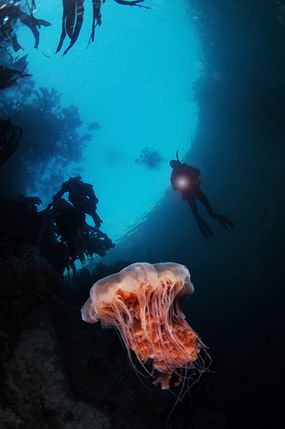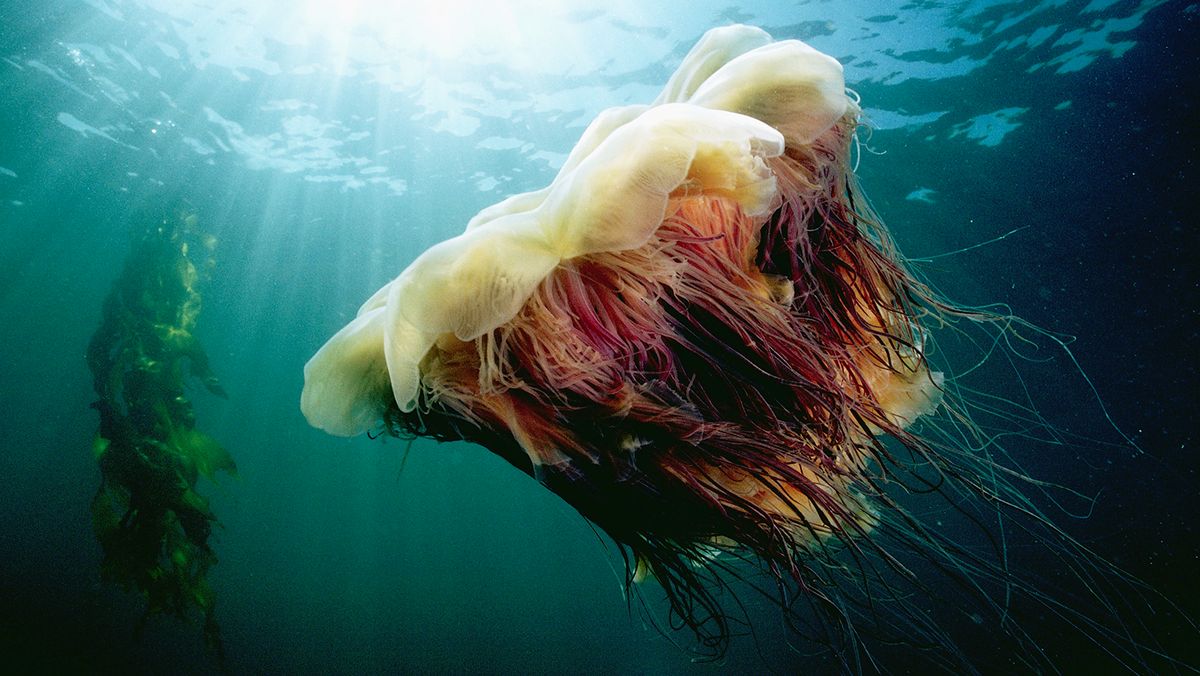Lion’s mane jellyfish can be found swimming in the Northern Hemisphere, in the cold waters of the Atlantic Ocean, Pacific Ocean and the North Sea.
While climate change is making life harder for many marine animals, most jellyfish — including the lion’s mane jellyfish— are thriving as the waters warm. With changes in the environment, researchers believe that the lion’s mane’s habitat might even triple in the coming years.

Rand McMeins / Getty Images
These days, there are more lion’s mane jellyfish sightings in places like Cape Cod and Nantucket, Massachusetts, the Gulf of Maine and off the coast of Ireland. That means these giant jellies now come into contact with human populations more often.
Jellyfish don’t pursue humans, but the unlucky swimmer who gets too close to the Cyanea capillata will get a painful sting.
Ignore the Old Wives’ Tale
You may have heard that if you get stung by a jellyfish, you can pee on the affected area (or get a ride-or-die friend to do so) to neutralize the venom. Bad idea. Urine can make the sting more painful and might even prompt any attached barbs to unleash more toxins into your body.
The best remedy is to douse the spot with vinegar to remove any tentacles, then apply a heat pack. Most people won’t need medical attention, although some have been hospitalized after tangling with a lion’s mane. Symptoms like sweating, stomach cramps or nausea are signs you should see a doctor.
The lion’s mane jellyfish’s tentacles can keep on stinging, even if they become detached from the jellyfish’s body. So if you find a tentacle on the shore, resist the temptation to touch it.











